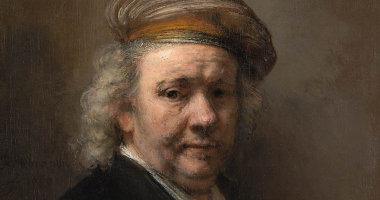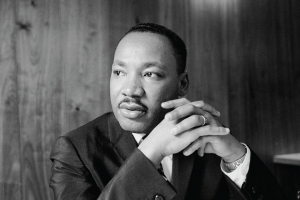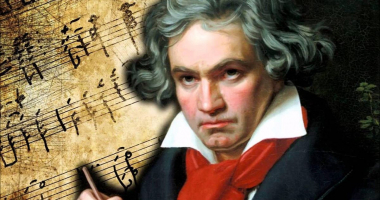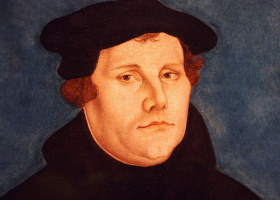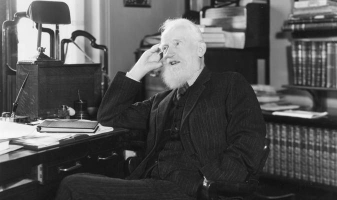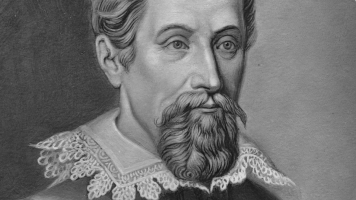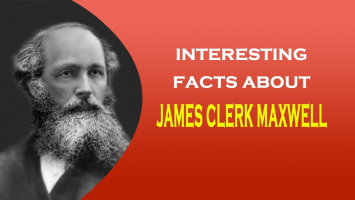Top 10 Interesting Facts about Martin Van Buren
Martin Van Buren, the first President of the United States to be a naturalized citizen, was born in Kinderhook, New York. Despite coming from a poor home, he ... read more...managed to become a successful attorney and finally held the position of Attorney General of New York. The nicknames “Little Magician” and “Sly Fox” were given to Van Buren because of his extraordinary political intuition. The most well-known of this moniker, “Old Kinderhook”, helped spread the use of OK. To know more about him, let's read this article about some interesting facts about Martin Van Buren.
-
In the American town of Kinderhook, New York, Martin Van Buren was born on December 5, 1782. He was Abraham Van Buren's third child with his wife Maria Hoes Van Alen. Abraham Van Buren had a tavern in addition to being a farmer. He was a Patriot who resisted British rule during the American Revolution. With whom she had three children, Maria Hoes was the widow of Johannes Van Alen. She wed Abraham, and they had five kids together after that. Martin's ancestors came to this country via the Netherlands. Her mother was likewise of Dutch descent. Martin studied English at school and spoke Dutch as his first language. So one of the interesting facts about Martin Van Buren is he is the only President of the United States to have used English as a second language.
He entered politics as a member of the Democratic-Republican Party after receiving legal training, earned a position in the New York State Senate, and was chosen to serve in the Senate in 1821. As the leader of the Bucktails group, Van Buren became the most significant New York politician in the 1820s and founded the Albany Regency, a political machine.
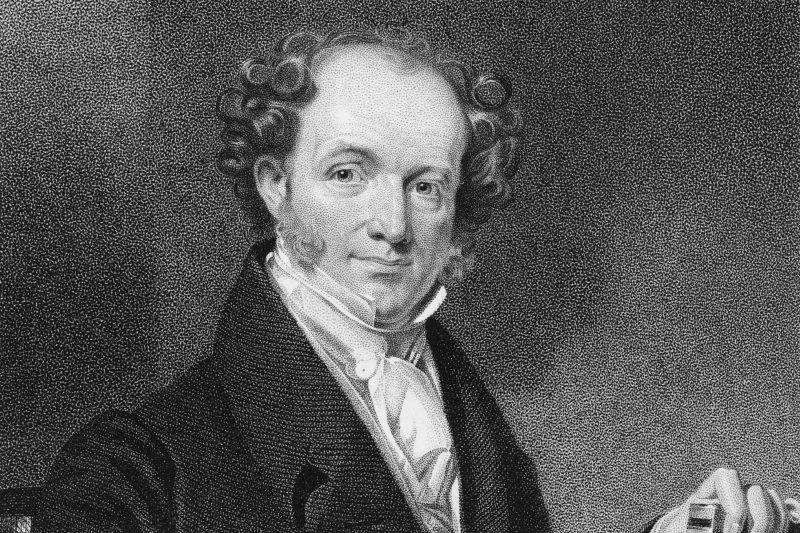
Photo: Portrait of Martin Van Buren - thoughtco 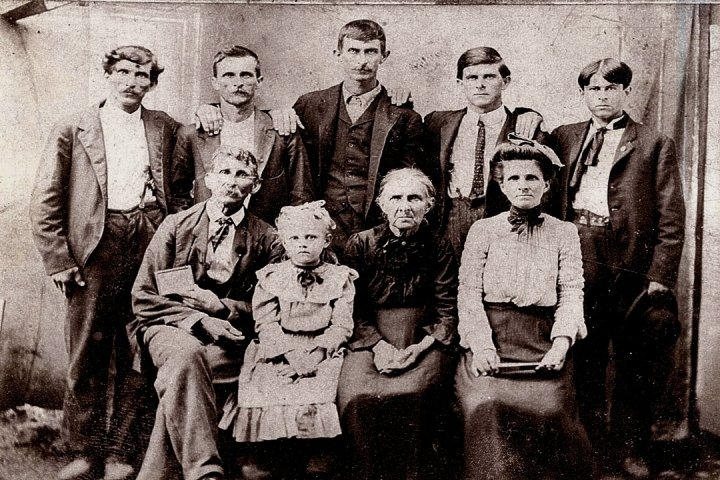
Photo: Martin VanBuren Shelton Family - wikitree -
The Van Burens were a struggling family with only six living children. Politicians like Aaron Burr and Alexander Hamilton frequented the bar that Abraham Van Buren owned. Martin got his first impression of American politics from this. Martin went to a one-room schoolhouse in Kinderhook until he was 14 years old. He did not attend college. Instead, his father utilized a political connection to get his son a job as a law clerk at a lawyer's office.
For seven years, Martin worked as a clerk, sweeping floors or running errands during the day while taking law classes at night. Martin Van Buren became a lawyer in 1803, when he was twenty-one years old. The Silvesters warned him to pay more attention to his wardrobe and personal appearance as an aspiring lawyer because he started his legal studies wearing shabby, homemade clothing. He followed their counsel and adopted the Silvesters' attire, demeanor, bearing, and behavior. Van Buren's career as a lawyer and politician, in which he was renowned for his friendliness and meticulous appearance, reflected the principles he received from the Silvesters.
Together with his half-brother James Van Allen, he relocated to Kinderhook to start his own legal practice. He had a great deal of financial and professional success as a lawyer. Van Buren would later hold the position of New York's attorney general.
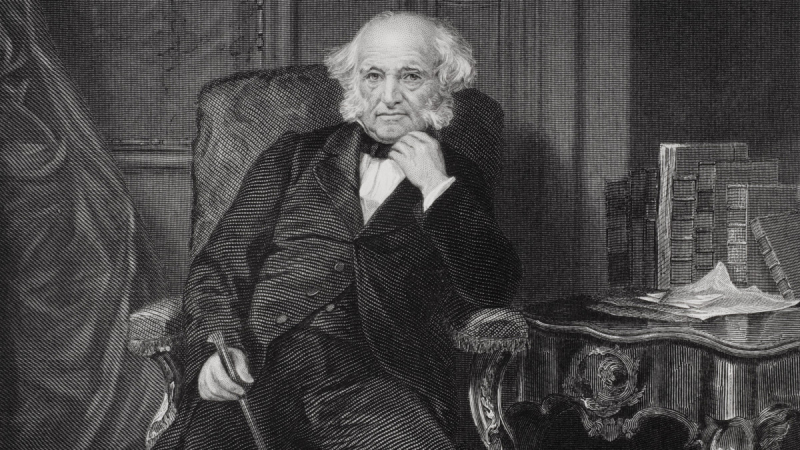
Photo: Portrait of Martin Van Buren - history 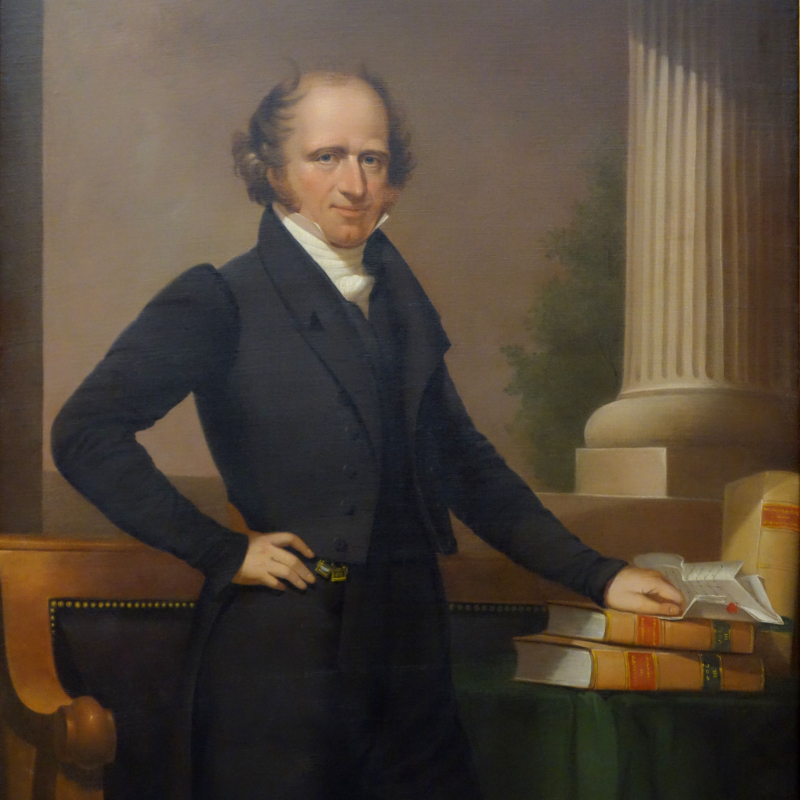
Photo: Portrait of Martin Van Buren - thoughtco -
Martin Van Buren married Hannah Hoes, who was 23 years old, when he was 24 years old. The ceremony was held on February 21, 1807, at the bride's sister's house in Catskill, New York. Martin's first cousin's daughter was Hannah. She and Martin had been friends since they were little. She was born in Valatie and, like Van Buren, spent most of her childhood there. She spoke Dutch as her native tongue and spoke English with a distinct accent.
Five children were eventually born to the marriage, four of whom reached adulthood. After contracting tuberculosis, Hannah Van Buren passed away on February 5, 1819, at the age of 35. Never remarrying, Martin Van Buren. Abraham Van Buren, Martin Van Buren's oldest child, wed Angelica Singleton in 1838. Martin appointed his daughter-in-law to serve as his hostess because he was a widower when he was elected president. The presidential parties were brought to life by Angelica van Buren. Martin's opponents used the fact that she was influenced by European court culture to charge the president with leading a regal lifestyle.
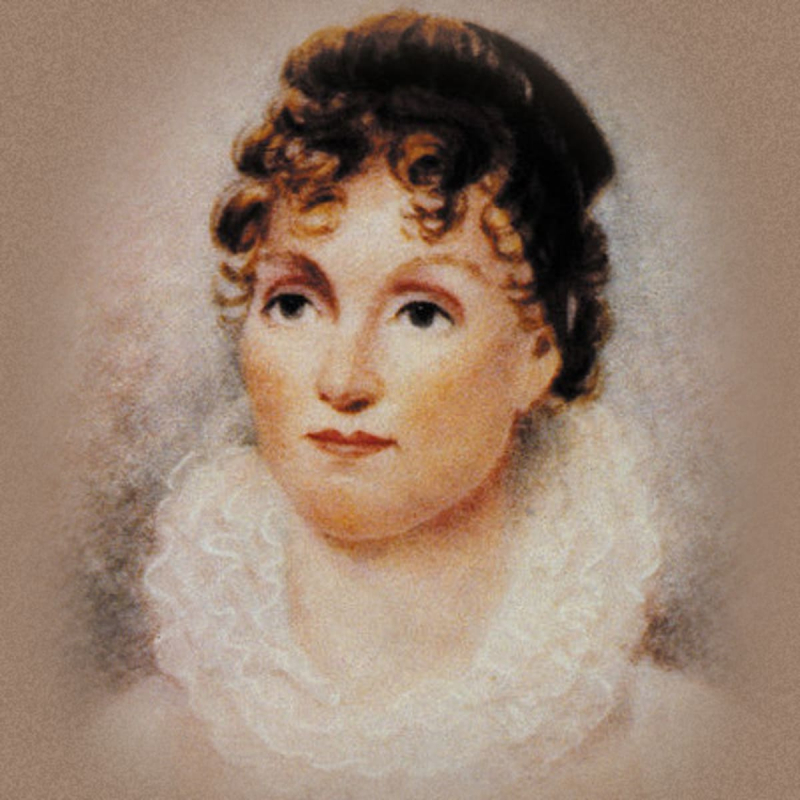
Photo: Martin Van Buren's Wife 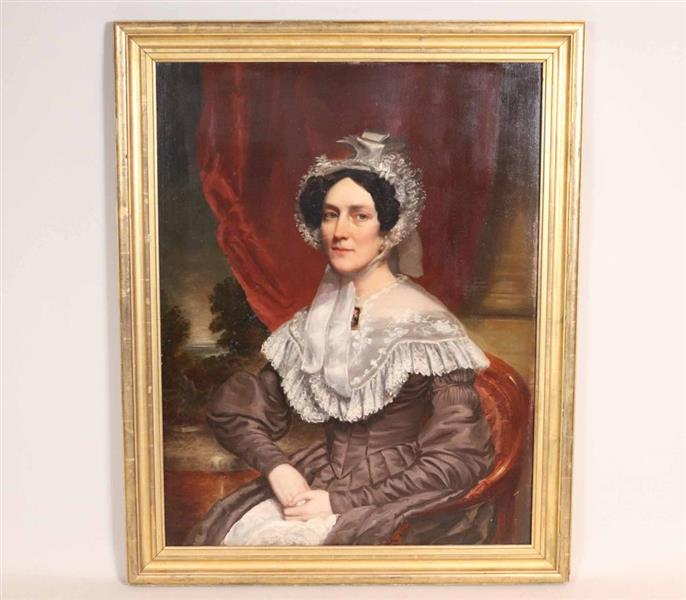
Photo: Portrait of Hannah van Buren - Wikiart -
When he assisted John Peter Van Ness in securing the party candidacy for the election to the 6th congressional district of New York at the age of 18, Van Buren first got active in politics. When he was elected to the New York State Senate in 1812, Van Buren made his first significant stride. When the state assembly chose Van Buren to represent New York in the US Senate in 1821, he made his political debut on the national stage. From March 4, 1821, through December 20, 1828, he represented New York as a US senator.
With the help of his friendships with well-known politicians, Van Buren soon rose to prominence in politics. With Andrew Jackson, he grew to be incredibly close. After Jackson defeated Adams and appointed Van Buren his Secretary of State, Martin Van Buren resigned from the Senate and ran successfully for governor of New York in 1828. Despite resigning as part of a cabinet reorganization in 1831, Van Buren went on to become Jackson's supporter as envoy to Britain and receive the Democrats' initial vice presidential candidacy in 1832. He ran against the recharter of the Bank of the United States, which Jackson vetoed in July 1832, on a ticket with Jackson. Van Buren was personally chosen by Jackson to succeed him as president four years later after the Jackson-Van Buren ticket soundly defeated Henry Clay of the opposing Whig Party.
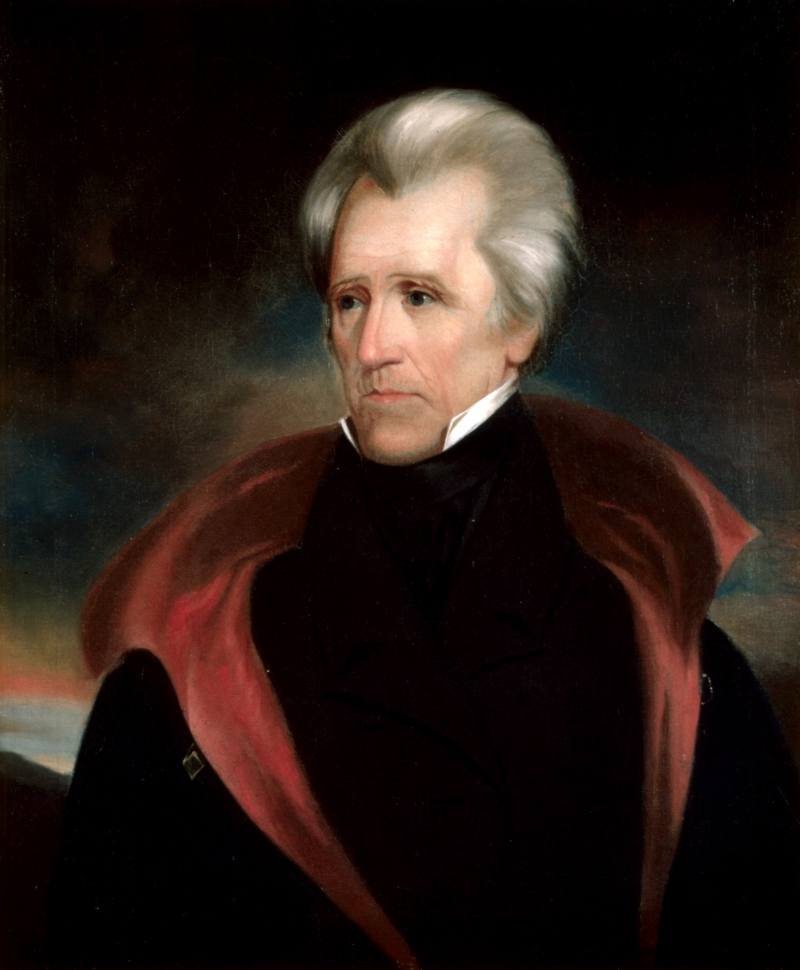
Photo: portrait of Andrew Jackson - wikipedia 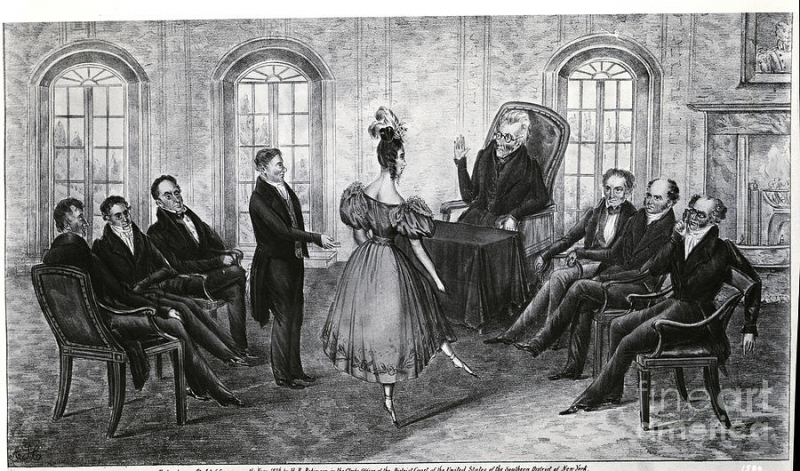
Photo: Martin Van Buren And Andrew Jackson by Bettmann - photos -
Although Andrew Jackson defeated John Quincy Adams in the popular vote, the outcome of the election was decided by the House of Representatives, since Jackson was unable to secure an electoral majority. Henry Clay was appointed Secretary of State in return for Quincy Adams becoming president, in a deal known as the “Corrupt Bargain”. Martin Van Buren served as the Senate's chief opponent of Quincy Adams' rule, and was a key player in the alliance that supported Andrew Jackson in the 1828 election. The Democratic Party, a new political organization, quickly developed from this coalition.
A group of Jeffersonian Republicans who supported Andrew Jackson, a war hero and president, came together under Van Buren to form the new Democratic Party. The contemporary Democratic Party was founded by political organizer Van Buren, and this is regarded as his most enduring accomplishment. Additionally, he led it to victory in the brand-new Second Party System. As a result, historians view him as essential to the growth of the American political system.
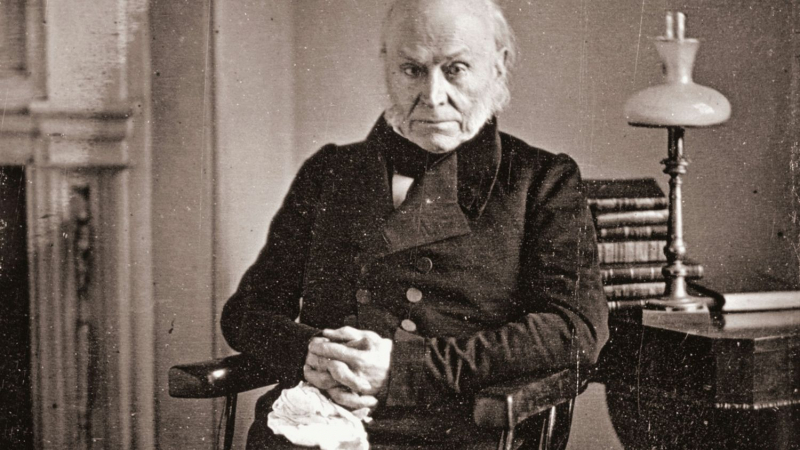
Photo: Portrait of John Quincy Adams - throughtco 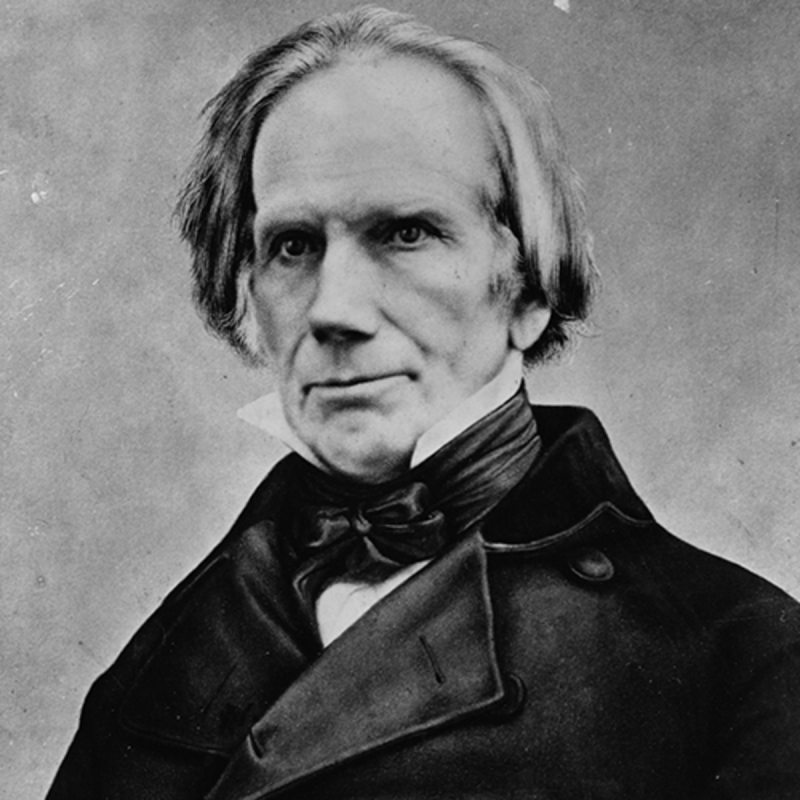
Photo: portrait of Henry Clay - biography -
Margaret O'Neale, sometimes known as Peggy, was a lowly socialite who was married to John Eaton, Andrew Jackson's secretary of war. Peggy allegedly started dating John Eaton while she was still legally wed to her first husband. The spouses of some members of Andrew Jackson's Cabinet objected to Mrs. Eaton's inclusion in their social circle because they disapproved of the conditions of her marriage. They avoided Mrs. Eaton socially, which led to the Petticoat affair or the Eaton affair, a significant scandal.
Martin Van Buren was unaffected by the status of the cabinet wives because he was a widower. He came up with a strategy to end the scandal. Van Buren's resignation as Secretary of State gave Andrew Jackson the chance to rearrange his cabinet and select new senior government leaders. The new cabinet was significantly shaped by Van Buren.
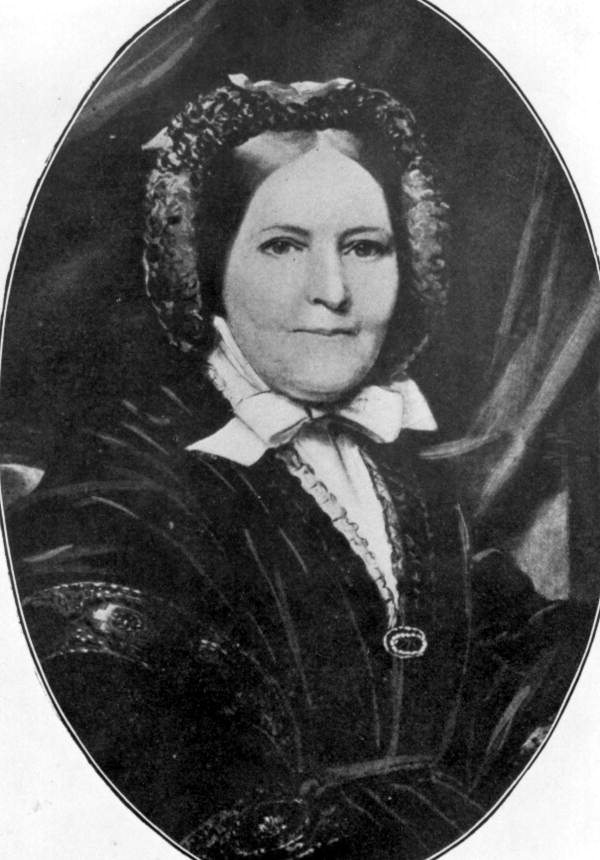
Photo: Portrait of Margaret O'Neale - commons.wikimedia.org 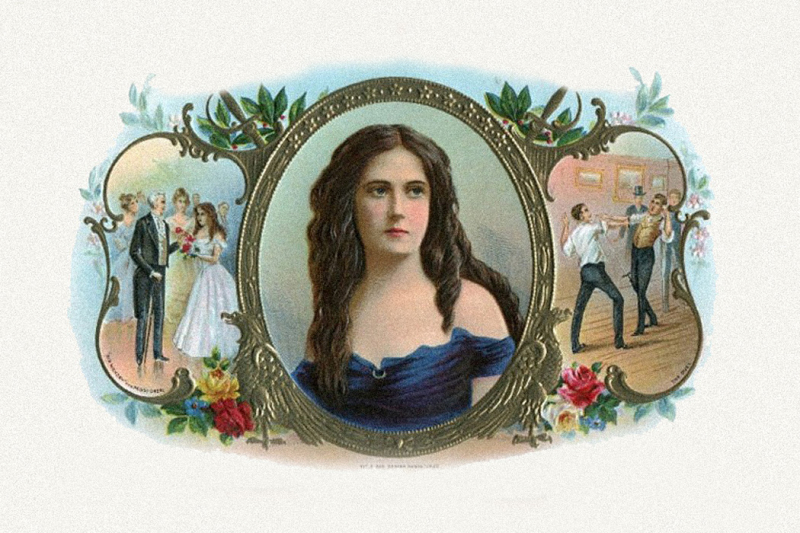
Photo: The Mrs. Eaton Affair - daily.jstor.org -
Jackson helped Van Buren secure the Democratic candidacy for the 1836 presidential election. With 764,198 votes in the popular vote, or 50.9 percent of the total, and 170 electoral votes, he won the election. From March 4, 1837, to March 4, 1841, Martin Van Buren presided over the United States as its eighth president.
The Panic of 1837, a financial catastrophe that sparked a severe recession that lasted until the middle of the 1840s, was the main concern throughout his presidency. There were only state-chartered banks after President Andrew Jackson abolished the Second Bank of the United States. The national bank should be rechartered, according to Van Buren's opponents. Van Buren, however, resisted doing this and instead set up the Independent Treasury to control the country's money supply. One of the main factors in Van Buren's defeat in the subsequent election was the widespread accusation that he caused the recession. But most contemporary economists believe that his regulatory economic strategy was successful in the long run.
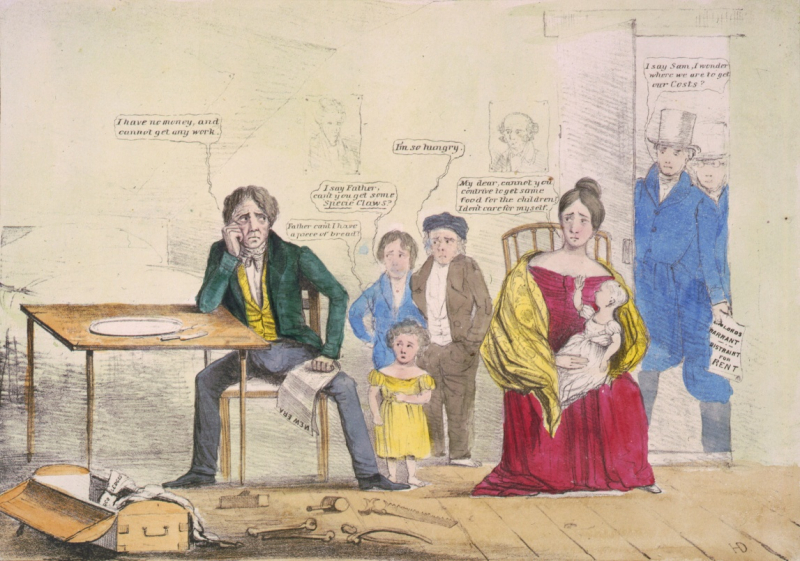
Photo: Panic 1837 - wikipedia 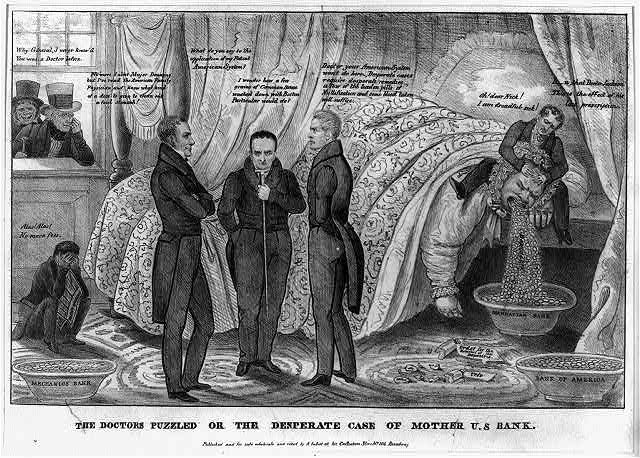
Photo: Panic 1837 - google sites -
William Henry Harrison, the battle veteran made famous by the catchphrases “Tippecanoe and Tyler Too” and “Log Cabin and Hard Cider,” ran against incumbent Martin Van Buren in the 1840 election. “O.K.” became the campaign catchphrase of Van Buren's followers. Van Buren earned the moniker “Old Kinderhook” after growing up in the town of Kinderhook in upstate New York. “O.K. Clubs” started to emerge across the nation as a result of the Democratic president's supporters. “OK now could have a double meaning: Old Kinderhook was all right”, writes Metcalf. One of the interesting facts about Martin Van Buren is he and his followers are thus responsible for the phrase “OK” popularity.
Van Buren, however, lost to Whig nominee William Henry Harrison in the 1840 presidential election. Harrison received 234 of the 294 electoral votes and a majority of the popular vote. Van Buren also went by the labels “Little Magician”,“Sly Fox” and “Red Fox of Kinderhoo” due to his political prowess, diminutive size, and reddish-blond hair.
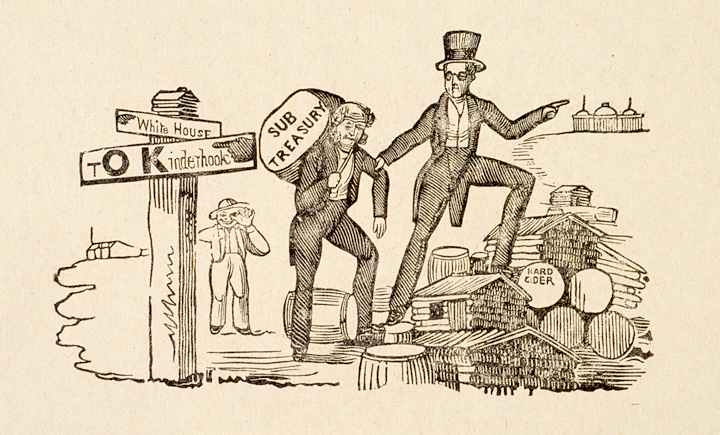
Photo: OK - historydaily 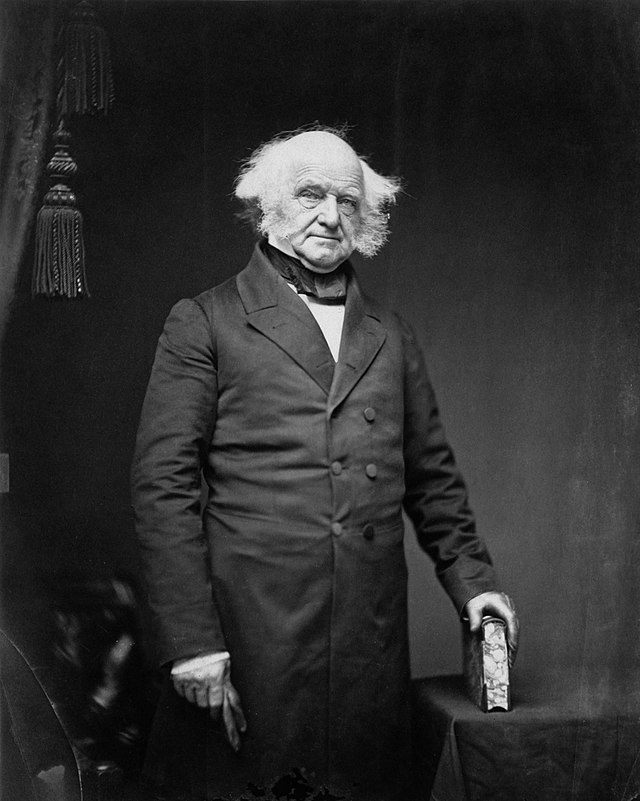
Photo: portrait of Martin Van Buren - wikipedia -
Van Buren released an anti-slavery manifesto as the Mexican-American War brought the discussion about slavery in the territories to the fore of American politics. He stated that the Founding Fathers had supported the eventual eradication of slavery in it and disproved the claim that Congress lacked the authority to control slavery in the territories. John Van Buren and Samuel Tilden, two of the Barnburner faction's leaders, rewrote the paper that came to be known as the "Barnburner Manifesto” at Van Buren's request. Many Barnburners wanted the former president to run for reelection in the 1848 presidential election, following the release of the Barnburner Manifesto. Competing New York delegations from Barnburner and Hunker were seated at the 1848 Democratic National Convention, but the Barnburners left when Lewis Cass, who opposed legislative control of slavery in the territories, was selected on the fourth ballot.
The Barnburners started coming together as a third party in response to Cass' nomination. The Barnburners proposed Van Buren as their candidate for president at a meeting held in Utica, New York, in June 1848. Van Buren accepted the candidacy despite being hesitant to leave the Democratic Party in order to demonstrate the strength of the anti-slavery movement, support the defeat of Cass, and undermine the Hunkers. A collection of anti-slavery Democrats, Whigs, and members of the abolitionist Liberty Party gathered in Buffalo, New York in August 1848 for the inaugural national convention of what would later be known as the Free Soil Party.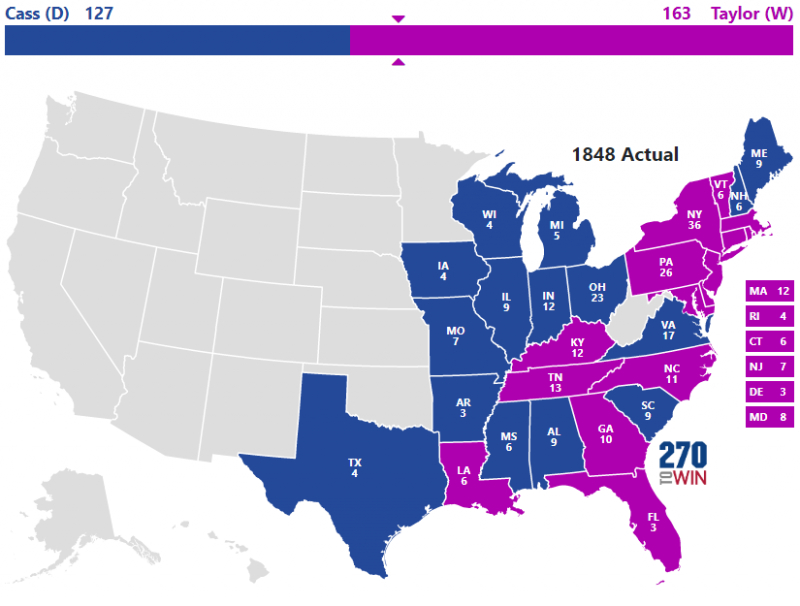
Photo: 1848 Presidential Election- 270towin Source: Mr. Beat youtube channel -
Martin Van Buren retired and didn't run for office again after the 1848 presidential election. He yet persisted in paying close attention to national politics. He declared his backing for the Union and Abraham Lincoln when the American Civil War broke out in 1861.
Late in 1861, Van Buren's health started to deteriorate, and pneumonia confined him to bed. On July 24, 1862, at his Lindenwald home in Kinderhook, Martin Van Buren passed away from bronchial asthma and heart failure. Age-wise, he was 79. The Martin Van Buren National Historic Site is presently located in his former house in Kinderhook. In addition to towns and counties, a ship, a mountain, three state parks, and many others bear his name. One of the interesting facts about Martin Van Buren is he has an autobiography named The Autobiography of Martin Van Buren. Posthumously, this book was released.
Van Buren's autobiography, which was first published in 1876 and included 776 pages, chronicled his life up to 1834—three years before he was elected president. Despite the fact that his wife, Hanna Hoes Van Buren, passed away from TB in 1819, she was not mentioned in the book. The White House's website justifies Van Buren's exclusion from bringing her up in any speeches by noting that “a gentleman of that day would not humiliate a woman by public remarks”.

Photo: The Autobiography of Martin Van Buren Hardcover - amazon 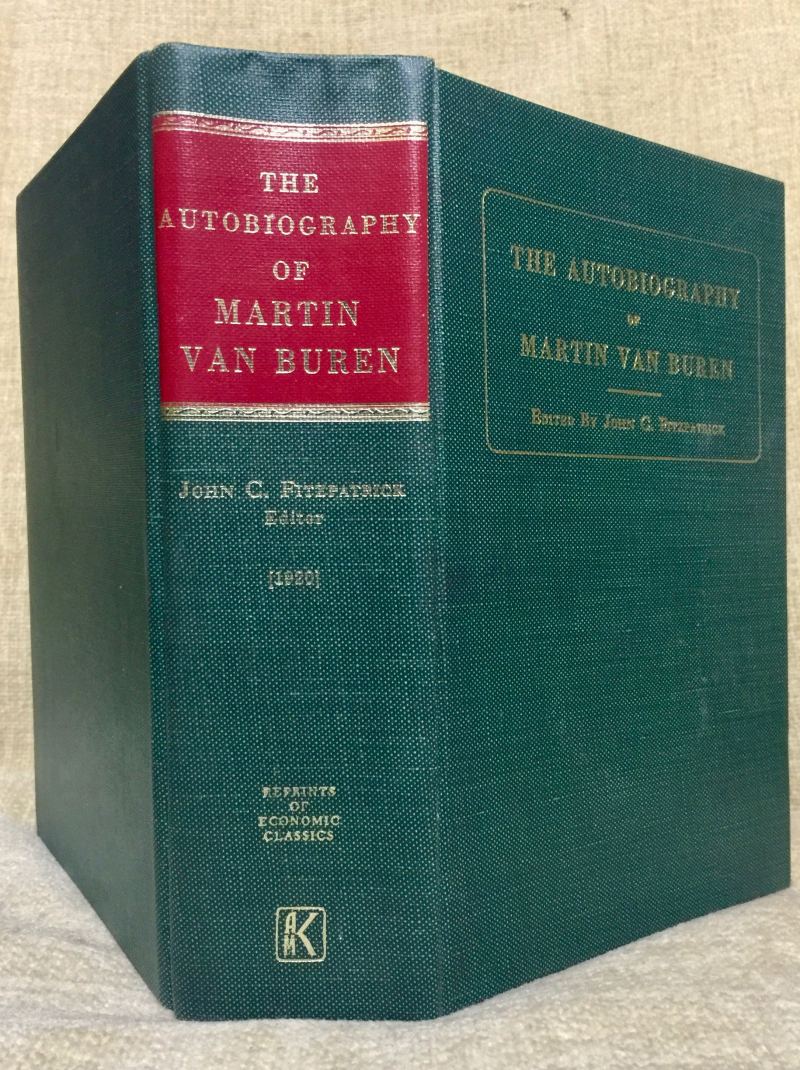
Photo: The Autobiography Of Martin Van Buren - biblio












